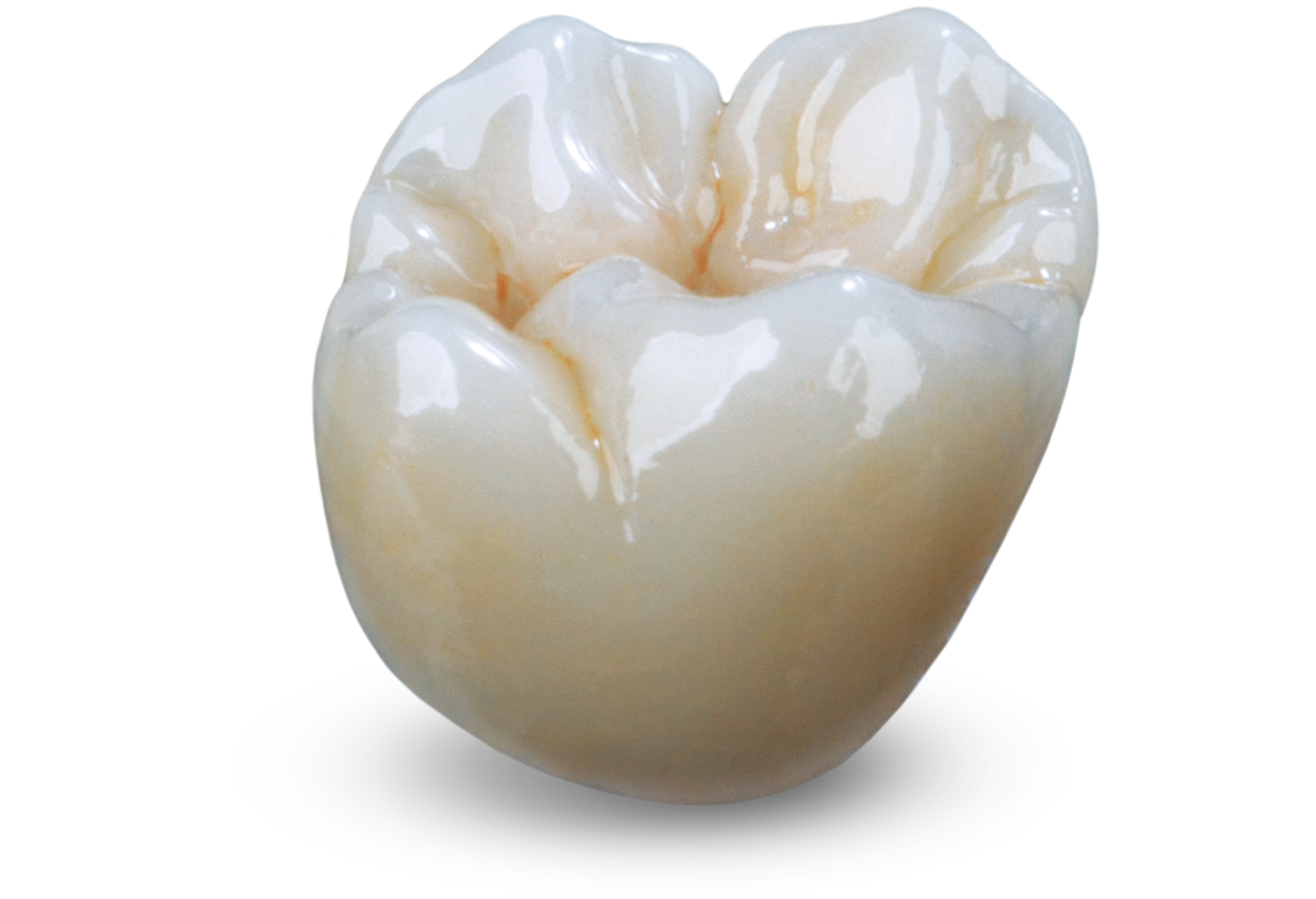
Dental crowns, also called caps, fit over worn or damaged teeth. They can also serve a cosmetic purpose by hiding the broken down or discolored tooth underneath. We may fit you with a temporary crown to protect a damaged tooth while the permanent crown is being made at one of our dental laboratories. Depending on the material used to make them, the wear they get, and the care they receive, permanent crowns last about 5 to 15 years. WHY DO I NEED DENTAL CROWN? Crowns serve multiple purposes in restorative and cosmetic dentistry. Mainly, they provide support to broken or weakened teeth, either through fractures, large fillings, or decay. Other examples include: *Anchoring bridgework *Restoring the appearance of misshapen, chipped, or discolored teeth *Covering a dental implant *Rebuilding a tooth after root canal treatment *Creating a healthy bite TYPES OF CROWNS & BRIDGES
- ZIRCONIA
- CERAMIC
- CERAMIC fused to Precious METAL
- CERAMIC fused to Non-precious METAL
- ALL METAL
*Also there is another group of custom made crown restorations like:
- INLAY
- ONLAY
- OVERLAY
- PINLAY
CERAMIC
Ceramic (Porcelain) crowns have the natural look and are generally indistinguishable from natural teeth. Due to advancement in ceramics they are every bit as strong as metal or Ceramic fused to Non-precious metal crowns. New CAD/CAM techniques allow dentists to create crowns in minutes. Ceramic crowns made in this way wear at the same rate as natural teeth. They are custom-crafted to match the shade and shine of your unique smile.
ZIRCONIA
Zirconia an all white “metal”, made from special type of ceramic. It’s been one of the BIGGEST advancements in dentistry that truly can replace other crown materials. Zirconia crowns have shown unmatched strength, durability, longevity, cosmetics, and patient comfort. Because of their enhanced durability and strength, Zirconia restorations generally last longer than porcelain. While ceramic crowns usually need replacement after a few years, with proper care, the Zirconia crown can last a lifetime. They cannot be affected by dental plaque, although you will still need to ensure that you have good dental habits to keep your gums and natural teeth nice and healthy.
CERAMIC fused to Precious METAL
This type of dental crowns are made from Ceramic which is bonded to Precious metal – mostly to white GOLD. This is how the strenght of custom made dental crown is improved. Unlike the All-Ceramic crown, a fused or bonded ceramic crown to gold is designed for a tooth that is subjected to high biting force. Fused ceramic crowns will take more stress than is practical for an All-ceramic dental crown.
When it comes to Implant-supported dental crowns, Ceramic fused to Gold is material of choice
CERAMIC fused to Non-precious METAL
Ceramic fused to Non-precious metal crowns are cast metal crowns which have a ceramic covering over it. The tooth colored ceramic is baked on top of a metallic alloy substructure called a coping for the ultimate in strength. The metal sublayer is thin, strong, and fits perfectly over the prepared teeth. It is often used when destructive night grinding is a problem or when long span bridges are needed.
Major disatvange is that these type of crowns iare totally opaque to light. It will not trans-illuminate light down the root of the tooth. When a patient has thin gum tissue, the illuminated root of a non-restored natural tooth will brighten the gum tissue color. When there is a PFM is on the tooth crown, no light is able to illuminate the gum area and the resulting darker gum can be very visible in some patients smile
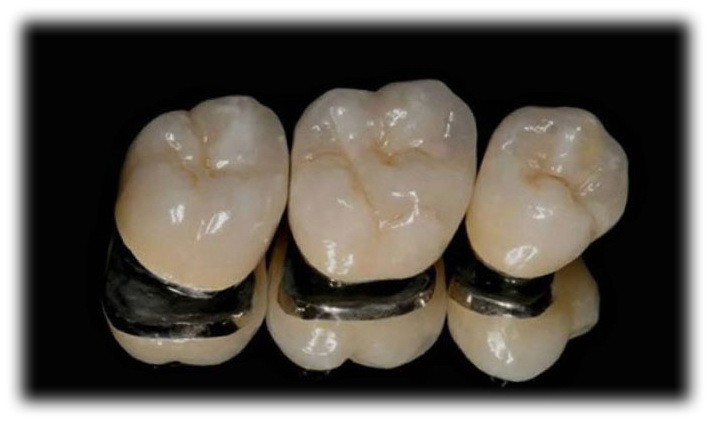
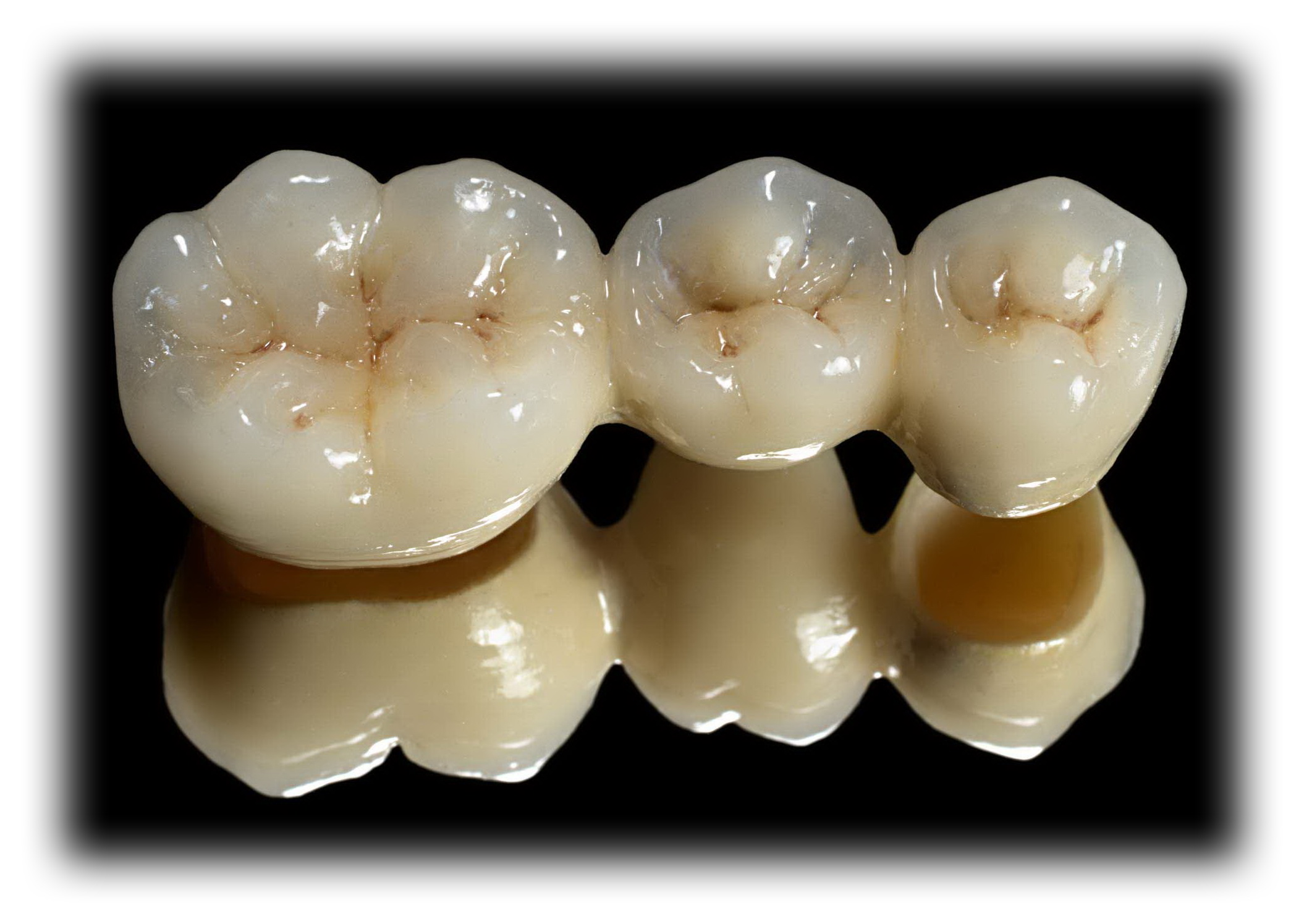
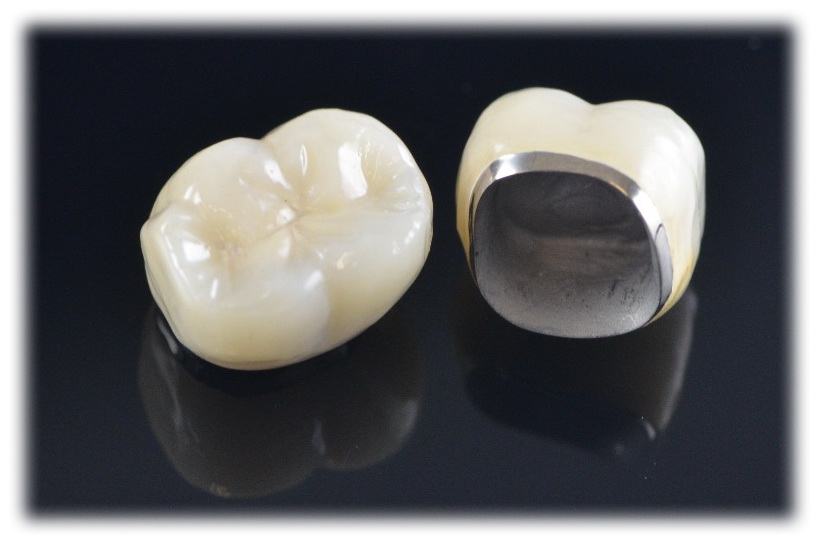

INLAY, ONLAY, OVERLAY
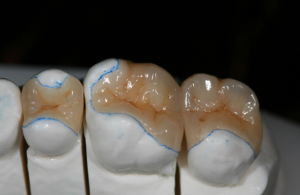
Inlays, onlays and overlays are esthetically and functionally superior to composite fillings. They are laboratory-made alternatives to composite and amalgam fillings made in dental practices. Inlays, onlays and overlays are made from glass-ceramics, just like veneers or E-max full ceramic crowns. The required tooth reduction is minimal because only the caries-stricken or filling-covered portion of the tooth needs to be removed. This helps preserve the healthy tissues of the tooth. After the tooth reduction, a precise impression is taken and sent to a dental laboratory, where the inlay, onlay or overlay is made.
Far superior to any type of filling, they efficiently protect teeth from wear and secondary caries formation.
DIFFERENCES:
Inlays cover the centre of tooth without touching the cusps;
Onlays cover one or more cusps;
Overlays cover the whole occusal surface of the tooth.
INDICATIONS:
-in case of caries which can not be treated with traditional filling.
-if there are caries at several tooth surfaces or in case of chipped tooth surfaces
-if the occlusal surface was badly damaged during the reconstruction of bite height
-replacement of old fillings
-replacement of amalgam dental fillings
-reconstruction of contact surfaces
-construction of root-treated teeth
-aesthetic reconstruction of teeth
-correcting tooth construction faults
